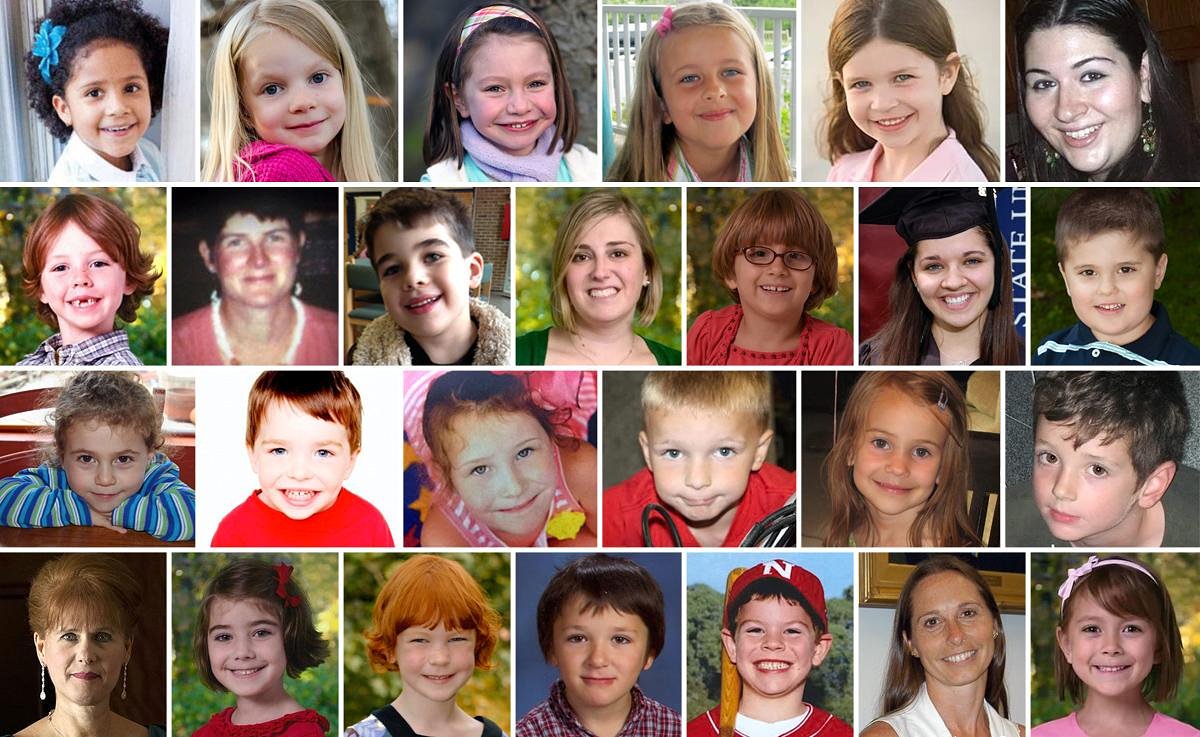The dark triad

This is one of the most awful things I’ve ever read:
The story of Lenny Pozner shows how these misinformation campaigns proceed. Two years after his son, Noah, 6, was murdered at Sandy Hook, Pozner started to receive chilling messages online. “I want to hear the ‘slaughter,’ and I won’t be satisfied until the caskets are opened,” one message read. “Prove to the world you’ve lost your son,” another demanded.
The missives in this case arrived from a woman with the online handle “gr8mom.” They were not the first, and wouldn’t be the last. . . .
When we spoke, I asked her whether she doubted Sandy Hook because first grade children being murdered in their classrooms was too hard for her to face. “No. I just had a strong sense that this didn’t happen,” she said. “Too many of those parents just rub me the wrong way.”
She judged the parents as “too old to have kids that age.” She found their clothes dowdy, their hairstyles dated. Where were their “messy buns,” “cute torn jeans,” their “Tory Burch jewelry”? She mocked their broken stoicism. Their lives had fallen to pieces, but in Watt’s mind they seemed “too perfect,” and also not perfect enough.
Watt had read widely about the shooting and the families, choosing from each account only the facts that suited her false narrative.
She brought up Chris and Lynn McDonnell, parents of 7-year-old Grace, a child with striking pale blue eyes who liked to paint. Lynn McDonnell told CNN’s Anderson Cooper that Grace had drawn a peace sign and the message “Grace Loves Mommy” in the fogged bathroom mirror after her shower, leaving traces her mother found after her death. She described the abyss she felt upon seeing her daughter’s white casket and recalled how she, Chris, and Grace’s brother, Jack, used markers to fill its stark emptiness with colorful drawings of things Grace loved.
Watt mocked this reminiscence in a singsong tone. “ ‘Ohhhhh, Grace. She loved loved loved loved loved Sandy Hook, and we’re glad she’s in heaven with her teacher, and she’s with her classmates, and we feel good about that,’ ” she said. “ ‘She had a white coffin, and we busted out the Sharpies and drew a skillet and a sailboat.’ NOBODY CRIED,” she barked.
This is from Elizabeth Williamson’s new book on the Sandy Hook murders and their aftermath. The excerpt is well worth reading in full, if you can stomach it.
Today, one-fifth of Americans believe all major mass shootings are staged, according to Joe Uscinski an associate professor of political science at the University of Miami who studies political conspiracy theories. . . . Uscinski, the political science professor, said that in most research, partisanship and ideology are less predictive of conspiratorial beliefs than are “dark personality traits.” People who embrace and defend “antisocial” conspiracy theories like Sandy Hook and QAnon often exhibit traits that psychologists call the “Dark Triad”: narcissism, psychopathy, and Machiavellianism, meaning the willingness to manipulate others to gain a certain result. Once isolated, now they bond online, deriving enhanced status and self-esteem as social media rewards them with likes, shares, and more conspiracy content. The survival of these virtual communities depends on their members’ defending these falsehoods, sometimes with confrontation and violence.
Whatever drives Kelley Watt, the toll her quests took on her family is clear. Shortly after I learned of Jim Watt’s death, I spoke to their daughter, Madison. In our exchanges, Kelley Watt had spoken proudly of Madison, a gifted artist and linguist, who to Watt’s frustration “doesn’t question things the way her mother does.”
In a fraught, seven-hour conversation, Madison relived the breakdown of her family while her mother pursued self-actualization through conspiracy-mongering. . .
Madison recalled years inhabiting the dreams her mother had for her, a shy, bookish little girl dressed in fur and entered in beauty contests. Once, while her mother shopped at Dillard’s, Madison crawled into a hulking four-poster bed on display and fell asleep. Finding her, Kelley was so taken by the tableau that she bought the bed. After the Watts lost their house, mother and daughter slept in the bed together, in an apartment so tiny they put it in the dining room.
Kelley still has it. She crawled into it with her iPad and wrote a chapter for Nobody Died at Sandy Hook, a libelous anthology compiled by Fetzer and a dozen other hoaxers. In her chapter, Watt analyzed the gunman’s bedroom, believing it too empty, too lacking in decor, for a kid that age to have lived there. She was keen for her daughter to read it.
“I think she feels bad that she in some way hasn’t accomplished something,” Madison told me. “It’s really important for her to be seen as someone really intelligent and good at research.”
Her mother believes she’ll eventually be proved right, Madison said: “And if that happens, even in the hereafter, then that’s her claim to fame.”
It’s getting to the point where there’s going to be no living with these people. I don’t have any answers, but I do know that denial isn’t one of them.


